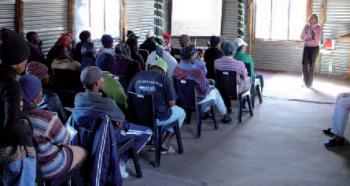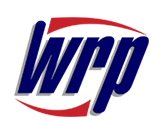Community management proves key to successful demand management
For water demand management programmes to become a sustainable part of improving water supply services in low to middle income countries, community awareness and education needs to be addressed. In the latest article from the IWA Water Loss Specialist Group, Ronnie Mckenzie, Zama Siqalaba and Willem Wegelin highlight a number of projects in South Africa where successful leak management was undertaken with support from the local communities.
Reducing water losses and other forms of wastage from water reticulation systems in South Africa is becoming one of the most important issues facing the country, as was recently highlighted in the President’s ‘State of the Nation’ speech in February 2010. A nationwide target reduction in domestic water use of 15% over the next five years has been tabled in Parliament and major efforts are currently being made to identify appropriate funding opportunities to support the required interventions.
South Africa is generally regarded as a low to middle income country and it is important to note that the level of service provided by most municipal water supply systems is of a first world standard. The water supplied throughout most of the country is of a very high quality and normal tap water in most parts of the country can be taken directly from the tap without a problem. The water is supplied 24 hours a day, seven days a week, and at typical operating pressures of around 50m. There are some areas in which residents do not receive potable water on a continuous basis and efforts are always being made to improve the situation wherever such conditions exist. Providing potable water on a continuous basis to all residents in SouthAfrica is one of the government’s key priorities, as is the need to reduce wastage wherever it occurs. Major efforts have already been made in many parts of the country to address water losses and wastage within the community, and in this regard South Africa boasts some of the largest and most successful advanced pressure control installations in the world.
The importance of community support
While technical solutions are clearly an important component of any water demand management (WDM) programme, the support of the community is by far the single most important factor that will determine whether or not a WDM project is successful and sustainable.Without community support, even the most effective and innovative technical measures will fail. Numerous examples of technical WDM interventions lie unused or broken throughout South Africa in cases where the communities they served were not involved with the process. While it is accepted that technical interventions, as proposed in most of the recent papers on the subject, are essential in order to reduce non revenue water, it is also noted that very few of the papers and documented case studies address the soft issues,with particular reference to community awareness and education.This article aims to highlight the importance of such issues as a pre-requisite to any successful technical intervention. The authors of this article have been involved with the implementation of many WDM interventions and the associated education and awareness campaigns for more than 12 years. There are numerous examples in which the support received from the community far exceeded all expectations and the projects were implemented without any problems or acts of theft etc. The examples provided have been taken from three of the largest and mlost significant WDM projects implemented in South Africa,namely:
- Emfuleni local municipality in Gauteng near Johannesburg
- Mogale local municipality located adjacent to Johannesburg
- Thembisile municipality to the north of the capital city of Pretoria
Emfuleni local municipality
The public participation programme in Emfuleni municipality was initiated in 2005 before the implementation of the large advanced pressure management project (see Mckenzie & Wegelin, 2010 and 2006), which has been described in various papers and publications. The initial process involved more than 50 public meetings as shown in Figure 1 with one in each ward of the Sebokeng / Evaton area, which has approximately 450,000 residents. The meetings were well attended by residents and community leaders, with the main purpose of explaining the purpose and need for the proposed pressure management installation.The community participants were very supportive of the proposed intervention and provided some very useful and constructive comments, including key information on areas already experiencing water pressure problems. This information proved to be extremely valuable, as it indicated the locations of what initially appeared to be the critical point areas. On detailed investigation, it was established that the areas identified by the community were not in fact at the critical point in many cases and the low pressure problems were due to operational problems and not the hydraulic characteristics of the reticulation system.While such problem issues were not technically part of the pressure management intervention, they had to be addressed as part of the overall solution. The community awareness and education process involved the following key issues:
- Appointment of water services assessors (WSAs)
- Preparation of educational material
- Schools awareness programme
- Community awareness programme
- Water wise gardening programme
- Stakeholder participation
Appointment of WSAs
An extensive employment process was carried out at the beginning of the programme with the advertisement of the posts. Approximately 5000 application forms were received and screened according to the criteria set by the service provider and the municipality. The final number of people employed on the project was 51 including two WSA coordinators, who were employed to monitor work closely on the ground.
Preparation of educational material
Educational materials in the form of posters, pamphlets and stickers were prepared for the programme. The material addressed wasteful household water use and tips on how to conserve water by changing wasteful water use habits, fixing or reporting internal plumbing leaks and water wise gardening. The materials were produced in four local languages; English, Afrikaans, SeSotho and IsiZulu to cater for the diverse population living in the supply area.
Schools awareness programme
An extensive leakage reduction programme was undertaken in 49 schools. At the conclusion of the project, prizes were awarded to the proactive schools which displayed commitment to water conservation and made a consistent effort to educate the learners regarding efficient water use practices.
Community awareness programme
A significant component of the project was training and capacity building. One of the primary objectives of the initiative was to capacitate people with the skills to implement solutions to their problems themselves even after the project had ended. The community awareness programme consisted of the following activities:
- Door to door education and awareness
- Workshops in community clinics on a weekly basis
- Internal and external leakage audits by the WSAs to pick up visible leakage and internal plumbing leaks
- A media campaign on local radio stations and news papers
Water wise gardening programme
The water wise gardening programme was largely incorporated into the community awareness programme and was dedicated to encourage consumers to curb the use of hosepipes, especially during peak demand hours and using buckets or watering cans rather than hosepipes for garden watering.
Stakeholder participation
Considerable support from the local municipality was provided to assist with the stakeholder participation process. Radio interviews took place, which were broadcasted to the local community presenting both local and national perspectives of WDM. Valuable input was also received from the ward councilors, the knowledge sharing exercise inducing the councilors to review some of their policies, particularly those pertaining to internal plumbing leakage.
Mogale City local municipality
This project was aimed specifically at unemployed and indigent youths who currently do not participate in the economic sector of the country. The individuals in the training programme were equipped with a variety of practical skills which were aimed at ensuring versatility in functioning. One of the objectives of this initiative was to encourage pro-activity and innovation in order to create employment. The programme accomplished much in meeting the above mentioned objectives. 12 individuals selected and provided with training covering a wide spectrum of water demand management interventions, including leak detection, data logging, meter reading and domestic leak auditing, control valve maintenance, meter installation and public participation. This programme led to the establishment of a WDM unit in Mogale City local municipality and the creation of numerous permanent posts within the municipality.
Thembisile sanitation programme
The Thembisile sanitation awareness programme differed slightly in that the scope of the project was significantly smaller, covering approximately 250 households that were earmarked for the installation of ventilated improved pit latrines. The community awareness programme undertaken in the area served to provide clear information to the residents regarding what the municipality was implementing and its objectives in doing so, and to answer questions that the residents had regarding the project. Similar to the Emfuleni awareness programme, many local residents were trained and appointed to educate and inform the community. The programme comprised primarily of door to door education and awareness, making the one-on-one contact possible and more effective in dealing with frustrated residents. Despite the difficulties on the project no vandalism of infrastructure took place. This project, although on a small scale, proved a valuable milestone in service delivery and clearly demonstrated that effective communication is essential in gaining the support of the residents.
Conclusions
Unlike the technical interventions, the success of public participation cannot be measured in financial terms. One of the primary objectives of the projects was to improve communication between the municipality and the public and judging by the increase in the reporting of leakage in some of the municipalities particularly Emfuleni and support for the WDM and sanitation projects, it is clear that this objective has been achieved and valuable insight has been gained into the problems faced by the communities.
One of the most important issues involves the education and use of local labour in any community awareness and education projects. Unemployment is very high in most middle and low income areas and job creation is often one of the most sensitive issues that must be addressed in any awareness campaign. From past experience it is essential that any employment opportunities created as part of the awareness process must be appointed in a completely open and transparent manner without any influence from local politicians etc. The recent spate of murders in the KwaZulu Natal area in July of 2010 due to the use of external labourers on a new pipe laying contract highlights the significance of this issue.
Due to the proper care and attention paid to the public involvement process included in the projects mentioned above, few problems were experienced with the implementation of the technical interventions. Although such efforts are difficult to quantify, they are necessary to support the other interventions which must be undertaken if the leakage is to be reduced. The communities also appreciate the effort taken to involve them in all aspects of the project, including the creation of many employment opportunities.
Future interventions must carefully consider the manner in which the skills and capacity developed can be retained and utilised for the improvement of the municipalities. The chief criticism of community-based interventions is their lack of sustainability and their deficiency in proper monitoring and evaluation. Meeting consumer demands must be accomplished in an efficient sustainable manner if the municipalities in SouthAfrica are to improve in their delivery of services to the citizens.
References
Mckenzie, R and Wegelin, W (2010) Scope for Pressure Management in SouthAfrica. Paper presented at the IWA Water Loss 2010 Conference in Sao Paulo, Brazil,6-9 June.
Mckenzie, R and Wegelin, W (2006) Small-scale South African PPP delivers pressure management success. Water21, magazine of the IWA, December 2006, pp 20-23.

